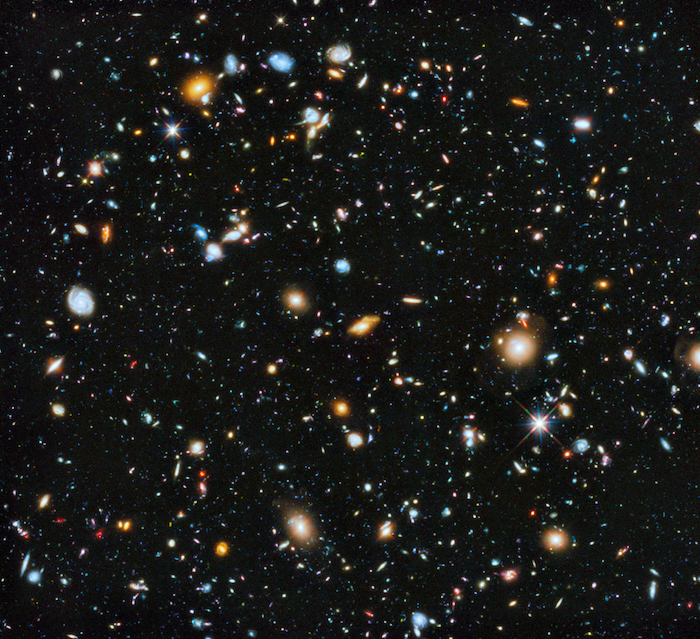 The Hubble Ultra-Deep Field image shows some of the most remote galaxies visible with present technology, each consisting of billions of stars. The image's area of sky is very small – equivalent in size to one tenth of a full moon. Photo credit: NASA
The Hubble Ultra-Deep Field image shows some of the most remote galaxies visible with present technology, each consisting of billions of stars. The image's area of sky is very small – equivalent in size to one tenth of a full moon. Photo credit: NASA
March 30, 2017 (Phys.org) -- Enigmatic "dark energy," thought to make up 68 percent of the universe, may not exist at all, according to a Hungarian-American team.
The researchers believe that standard models of the universe fail to take account of its changing structure, but that once this is done the need for dark energy disappears. The team publish their results in a paper in Monthly Notices of the Royal Astronomical Society.
Using a computer simulation to model the effect of gravity on the distribution of millions of particles of dark matter, the scientists reconstructed the evolution of the universe, including the early clumping of matter, and the formation of large scale structure.
Unlike conventional simulations with a smoothly expanding universe, taking the structure into account led to a model where different regions of the cosmos expand at different rate. The average expansion rate though is consistent with present observations, which suggest an overall acceleration.
more
READ MORE: Phys.org





